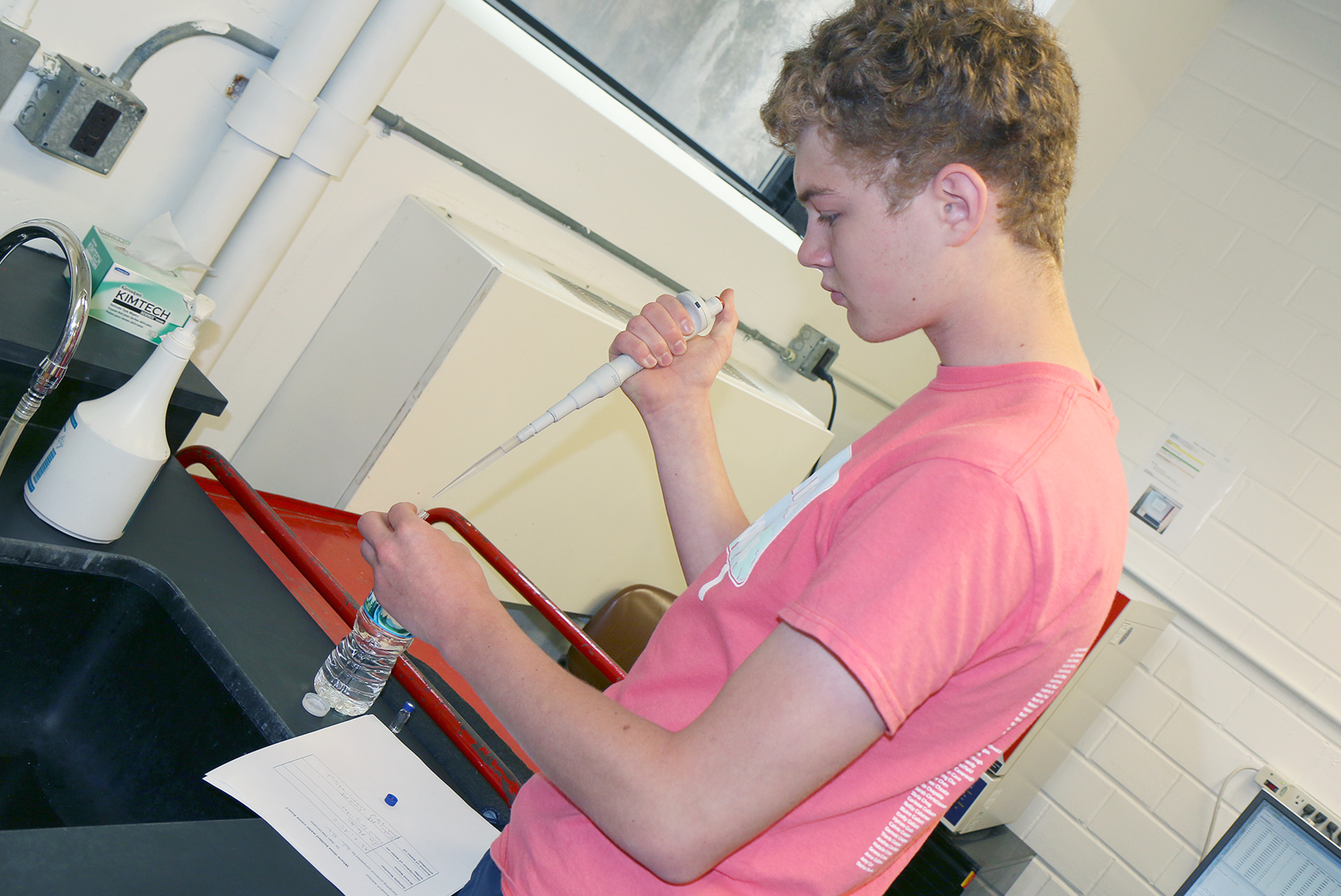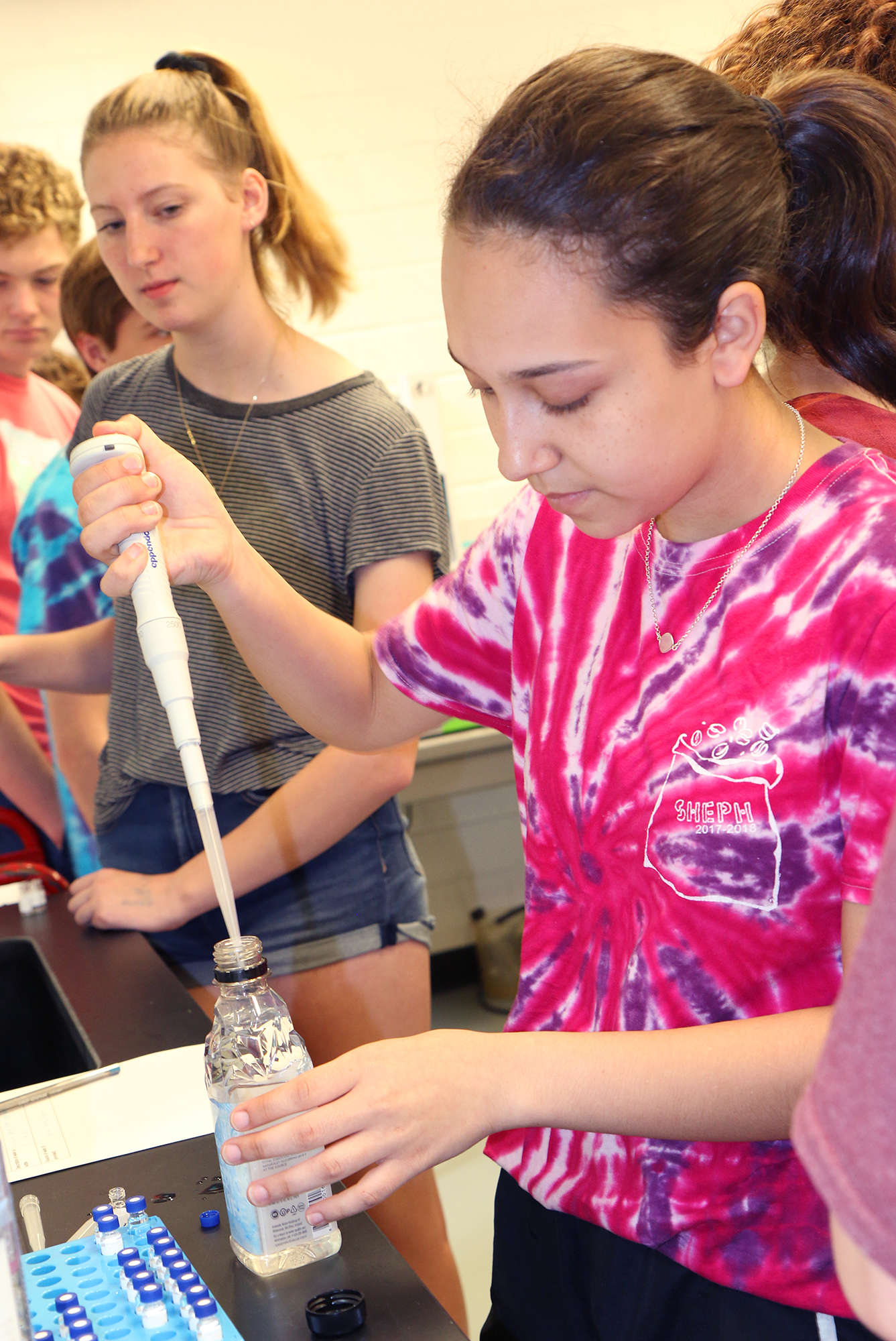Ames High School students trace the source of their bottled water in the stable isotope lab
Author: Amy Juhnke
Author: Amy Juhnke
Eight students from Ames High School visited the stable isotope lab in the Department of Geological and Atmospheric Sciences to test where the water in their water bottles came from.
The event was led by Cinzia Cervato, Morrill Professor of geological and atmospheric sciences; Alan Wanamaker, associate professor of geological and atmospheric sciences, and Suzanne Ankerstjerne, research associate of geological and atmospheric sciences.
The students signed up through their science classes at Ames High School and were accompanied by Collin Reichert (’11 M.S. Geology, M.A. Science Education), earth and space science teacher at Ames High School.
“Our goal would be to make this event more regular, especially with Ames High,” Wanamaker said, “To facilitate a back and forth relationship between the sciences over there and the sciences over here.”

The activity, testing water to identify its source location, was designed to show the students the breadth of geology research and to get them excited about geosciences.
“This has been studied because it has forensic applications,” Cervato said. “We drink tap water or bottled water and that goes into our body.”
Because the water can be identified and mapped by its particular isotopic composition, water found in the body such as in hair, can identify where a person has been. Additionally, it can be used to verify commercial claims about sources of bottled water. Similar methods with carbon and nitrogen are used to identify organic material, such as produce or honey.

The students prepared samples of bottled water which they brought to the lab. They will receive printouts of the data which their teachers will then help them analyze.
“We like to create a relationship with the teachers,” Cervato said. “Once we send them back the data, we can work with the teachers to try to interpret the data and understand what the uncertainties are.”
Some of the students were already interested in geosciences; others were considering it as a future major or just interested in science generally. For all of the students, attending the event was a chance to see real science and scientific machinery in action.
“The mechanics of this are very interesting,” said Brennan Seymour, junior at Ames High School. “I know a lot about mass spectrometry. Seeing it in action is nice and just being here in the workplace, talking to people that do this for a living. It’s really interesting to me.”